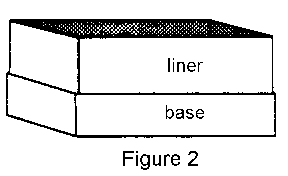|
Last edited: 1 November 2016
|

Easy Lid solar box cooker with fabric/glue/beeswax waterproofing
The Easy Lid cooker is a variation of the Minimum Solar Box Cooker a popular solar box cooker design. This design is especially easy to build since half of the larger cardboard box becomes the lid, so there is no need to build a separate lid as with the Minimum Solar Box Cooker. This innovation was first conceived of by Chao Tan and then refined by Tom Sponheim.
Although designs for cardboard cookers have gotten simpler, fitting a lid can still be difficult and time consuming. In this version, a lid is formed automatically from the outer box.
Materials
- Two cardboard boxes
- Glue
- Reflective material
- One turkey-size oven cooking bag or a sheet of glass
- One piece of aluminum flashing (or other metal) painted black. (If this is not available, then just paint the bottom of the cooker on the inside black.)
- One dark-colored pot with a dark or clear lid (You can also cook in clear jars.)
Making the Base
Take a large box and cut it in half as shown in Figure 1. Set one half aside to be used for the lid. The other half becomes the base.
Fold an extra cardboard piece so that it forms a liner around the inside of the base (see Figure 2).
Use the lid piece as shown in Figure 3 to mark a line around the liner.
Cut along this line, leaving the four tabs as shown in Figure 4. (The tabs need to be long enough to tuck in under the inner box once it is placed onto the liner)
Glue aluminum foil to the inside of the liner and to the bottom of the outer box inside. Set a smaller (inner) box into the opening formed by the liner until the flaps of the smaller box are horizontal and flush with the top of the liner (see Figure 5). Place some wads of newspaper between the two boxes for support.
Mark the underside of the flaps of the smaller box using the liner as a guide. Fold these flaps down to fit down around the top of the liner and tuck them into the space between the base and the liner (see Figure 6). Fold the tabs over and tuck them under the flaps of the inner box so that they obstruct the holes in the four corners (see Figure 6).
Now glue these pieces together in their present configuration. As the glue is drying, line the inside of the inner box with aluminum foil.
Finishing the Lid
Measure the width of the walls of the base and use these measurements to calculate where to make the cuts that form the reflector in Figure 7. Only cut on three sides. The reflector is folded up using the fourth side as a hinge. Glue an oven cooking bag or glass in place on the underside of the lid. If you are using glass, sandwich the glass using extra strips of cardboard. Allow to dry.
Bend the ends of the wire as shown in Figure 7 and insert these into the corrugations on the lid and on the reflector to prop open the latter. Paint the sheet metal (or cardboard) piece black and place it into the inside of the oven.
Improving Efficiency
- Glue thin strips of cardboard underneath the sheet metal (or cardboard) piece to elevate it off of the bottom of the oven slightly.
- Cut off the reflector and replace it with one that is as large as (or larger than) the entire lid. This reflects light into the oven more reliably.
- Turn the oven over and open the bottom flaps. Place one foiled cardboard panel into each airspace to divide each into two spaces. The foiled side should face the center of the oven.
Increasing Longevity and Weather Resistance
Your Easy Lid cooker will live longer and have some resistance to early dew or a brief, unexpected shower if you paint the exterior of the cardboard with a few coats of exterior latex paint (color doesn't matter). You will get even more water-resistance, as well as greater structural strength if you give it the full fabric/glue/beeswax treatment detailed on the Tips and tricks page. You should still put your cooker away during spells of bad wet weather—it is still only cardboard—but either of these treatments will result in a stronger, more water-resistant cooker.
- Main article: Waterproofing
See AMDU







